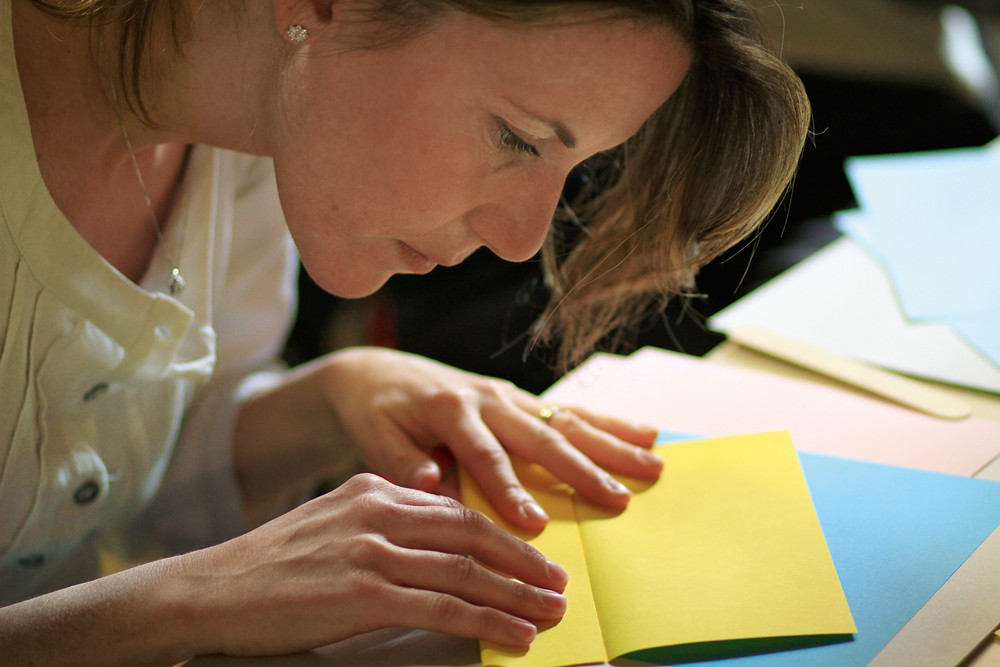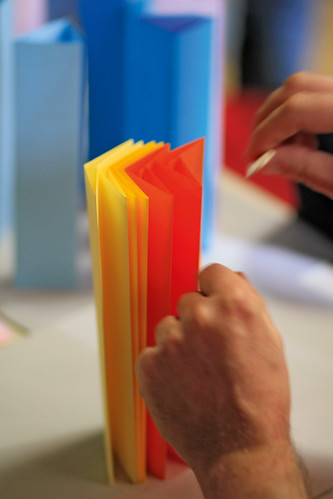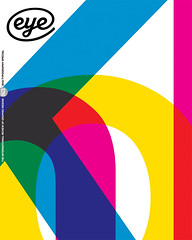Summer 2012
Paper tigers
Deborah Burnstone describes Fedrigoni’s inspirational workshops for secondary school art and design teachers

With paper mills closing down at an alarming rate the world over, Fedrigoni’s investment of half a million euros into a four-year education programme seems a bold step indeed.
Thanks to the Verona-based paper group, hundreds of secondary school art and design teachers throughout Italy will have the opportunity to attend free workshops giving them hands-on experience of making things out of paper.
The Officine Fabriano, as they are called, are aimed at people teaching art and design to ten- to thirteen-year-olds: ‘It’s a group of teachers that gets little attention from funding programmes – they are not from the “strong” topics like maths or languages,’ explains Chiara Medioli, marketing director of Fedrigoni SpA.
The bill is to be met entirely by Fedrigoni. ‘Since we are funding a programme that teaches skills connected with paper, we hope to see people more interested in this material,’ says Medioli. ‘We don’t engage directly with children, so as not to expose them to our brand; we let teachers decide which brand to use – we just teach them several things to reproduce in a classroom.’
Twenty workshops are planned every year on topics such as binding, printing, papermaking, typography, and even geometric origami or brass rubbing. Course leaders include book artists Suzy Lee (a Camberwell graduate) and Silvana Amato; graphic and product designer Sachiko Mizoguchi; and origami artist and film-maker Luisa Canovi. Some of the workshops include gallery tours, and there are other events organised in conjunction with art publishers Edizioni Corraini and the education departments of local museums and galleries.
Feedback has been very positive – as is evident from the effusive comments posted on the Fedrigoni blog. ‘I listened and I experimented with great enthusiasm,’ says one. Another reports: ‘It’s been an interesting, enriching and enjoyable experience. The workshop gave us precious strategies to motivate [and] “train” our students in interesting and important activities.’
Medioli hopes the seminars will increase awareness of things you can do with paper – in two and three dimensions. ‘These are not arts and crafts courses – we tie into many other subjects that kids learn, such as geometry and technical drawing.’
Silvana Amato, who runs the workshop on ‘The Anatomy of the Book’, has discovered that undergraduate graphic design students rarely know anything about bookbinding and book structure but are very enthusiastic when given instruction.
‘My idea was to transfer the same knowledge to school teachers,’ Amato says. ‘You only need to learn a few useful tools and basic concepts and you can make any book by yourself. The hope is that the teachers who have built book structures with me will experiment with students and create countless variations and objects made of paper, capable of recording forms of expression.’
As more and more of us turn to ebooks and other virtual publications it is possible that the physical, emotional, tactile and visual qualities of the books we do buy will become increasingly important.
Medioli is determinedly optimistic: ‘Book artefacts will need to be more beautiful and appealing to the five senses. Books that are now printed on cheap paper, coated or woody stock will be natural candidates for being ebooks. All the rest will remain paper, and possibly improve.’
A student prepares paper to make origami polyhedrons at Luisa Canovi’s course in Verona. Canovi describes the course as ‘explaining geometry through folding paper’. Photo by Flavio Pettene for Fedrigoni.
Top: a participant carefully folds paper to obtain a geometrically perfect artefact at Luisa Canovi’s origami course in Verona, April 2012. Photo by Flavio Pettene for Fedrigoni.

First published in Eye 83 vol. 21, 2012
Eye is the world’s most beautiful and collectable graphic design journal, published quarterly for professional designers, students and anyone interested in critical, informed writing about graphic design and visual culture. It is available from all good design bookshops and online at the Eye shop, where you can buy subscriptions, back issues and single copies of the latest issue. You can also browse visual samples of recent issues at Eye before You Buy.

